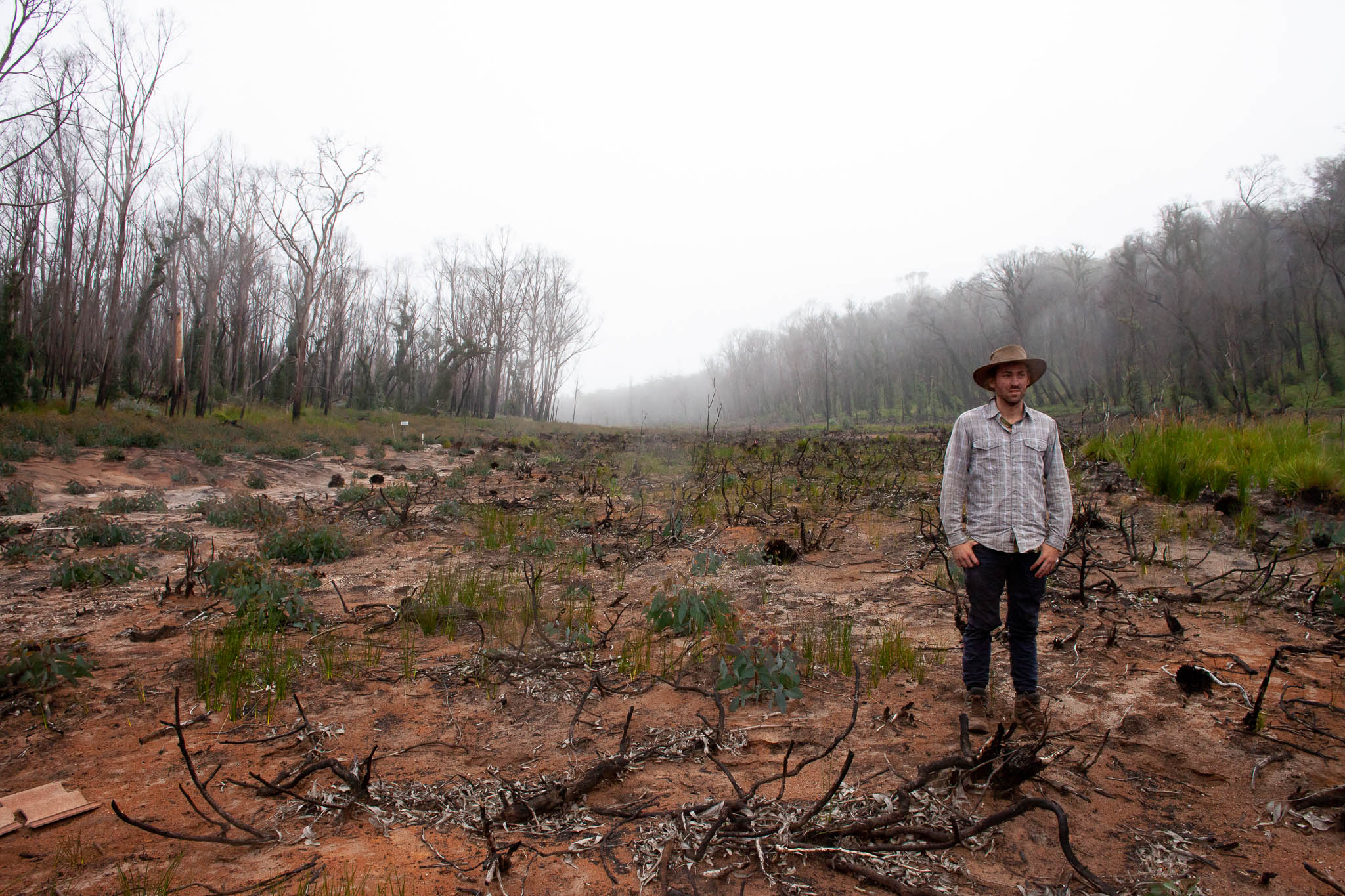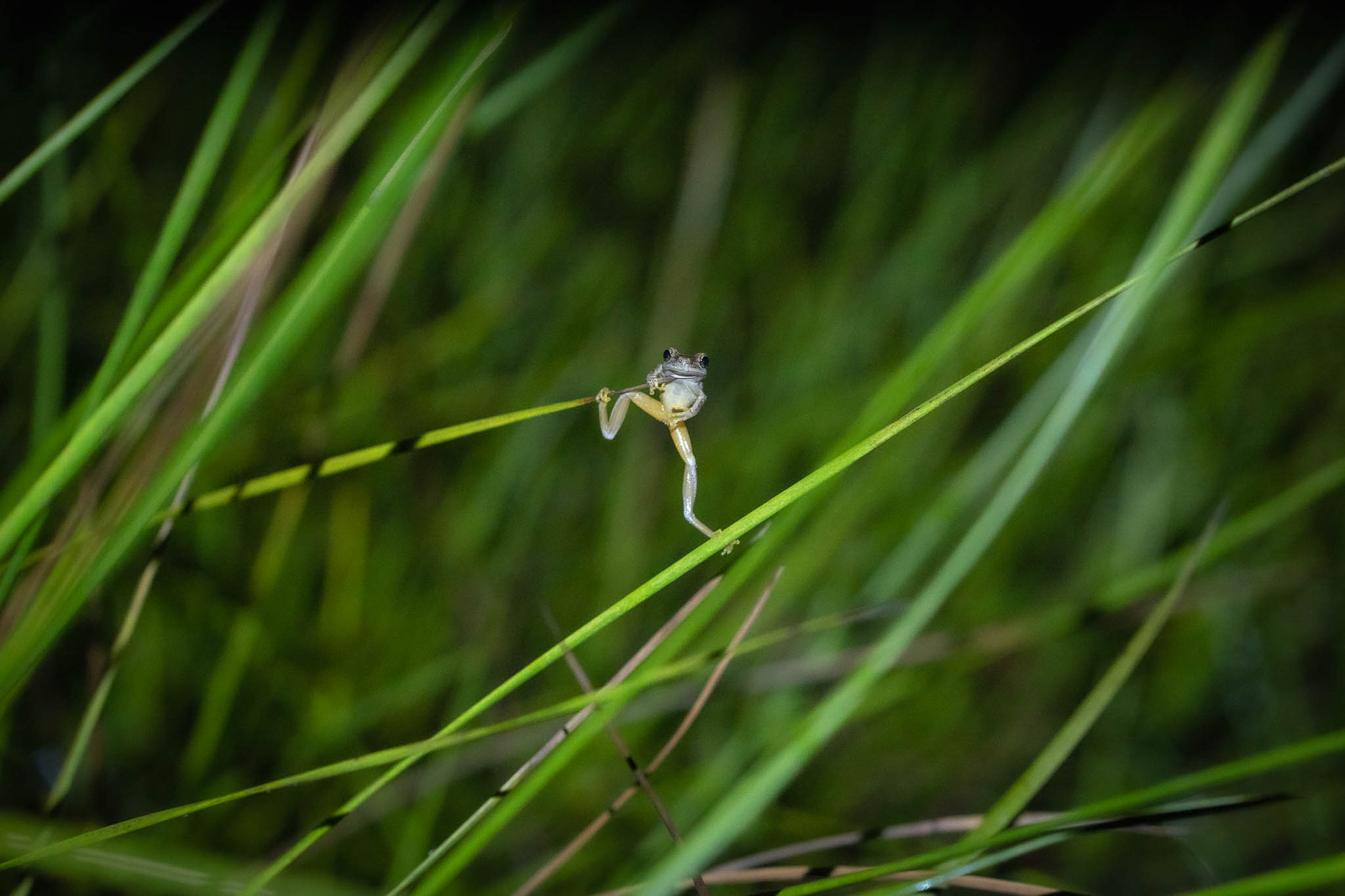The true impact of the Black Summer fires on frogs
The first extensive survey of amphibian communities since the 2019-20 Australian Black Summer bushfires has revealed the true impact of severe fire on frogs in eastern NSW.
While some species surprised scientists with their fire-proof resilience, others suffered local extinction following the unprecedented fires.
Scientists from the University of Newcastle and the Australian Museum surveyed 35 threatened frog species across more than 400 sites in northeast and southeast NSW over 18 months following the Black Summer fires.
Lead researcher, University of Newcastle’s Dr Chad Beranek, said concerningly, community-wide losses of amphibian populations were revealed.
“We looked at the amount of severe burning within the surrounding landscape, and correlated this to the presence, or absence, of frog species to get a picture of local extinction following the bushfires,” Dr Beranek said.
“We found that the fires significantly reduced the distributions of at least six frog species and whole communities, especially in the southern NSW region where the fires were more severe.
“Some species are now locally extinct.
“This raises serious concern for the survival of frogs under an increasingly fire-prone climate.”
The study, which was funded by a Commonwealth grant – the Bushfire Recovery Program for Wildlife and Habitat – was published in the international journal, Diversity and Distributions.

Dr Chad Beranek pictured in post-fire damage to Carne West Swamp. Photo: Stephen Mahony
The unexpected ‘fireproof’ frog
Certain species were impacted by the fires more severely than others; most significantly those found in rainforest habitats which rely on moisture – the Pouched Frog, Giant Barred Frog, and Pugh’s Mountain Frog.
“These rainforest-dwelling species do not have an evolutionary history in areas prone to drought and fire events,” Dr Beranek said.
Burrowing frog species were also drastically impacted by the fires.
“Burrowing frogs are thought to be quite fire tolerant thanks to their ability to burrow underground to avoid heat. We were surprised to learn that burrowing species did not fare well in severe fire,” Dr Beranek said.
“It’s possible the sheer scale and severity of the 2019-20 wildfires may have exceeded the physiological limits of even species with fire-resistant adaptations.”
While the main aim of the study was to survey the impact of severe fire on threatened frog species, the team gleaned insights on common frog species from the 1,100 visual surveys they undertook.
Researchers also collected 16,000 files of overnight acoustic recordings – taken across 411 sites – and painstakingly analysed frog calls to identify species.
“We did find that even common frog species were impacted by the fires,” Dr Beranek said.
“Gathering data on every single other species that we recorded during the survey meant we could look at the impacts of the fire on a community-wide scale, not just an individual species.”
There is surprising new hope for one frog group though, the tree frogs.
Dr Beranek said it was assumed the severity of the fires and resulting incineration of canopy in their tree habitat would leave tree frogs highly vulnerable.
“Amazingly, tree frogs were not impacted by severe fire.
“We suspect deep hollows in trees served as a buffer to help protect them from drought and fire,” Dr Beranek said.

Littlejohn's Tree Frog (Litoria littlejohni)
The canary in the coal mine
The Black Summer fires of 2019-20 were unprecedented in severity and scale and were preceded by a record-breaking drought causing very low moisture levels.
Dr Beranek said it was widely accepted that the fires were climate-change driven.
“This study revealed frogs were the canary in the coal mine for impending ecosystem-wide impacts of climate change,” Dr Beranek said.
“Now that La Niña is coming to an end and we enter a period where bushfires are predicted to burn with greater severity, proactive conservation actions need to be directed to amphibians.”
Dr Beranek works alongside a team of scientists at the University of Newcastle who are testing a range of conservation tools – including sperm cryopreservation and frog ‘hotels’ – to minimise the threat of drought and fires on vulnerable frog species.
“However, without global action to stop climate change though, conservation measures are simply band aid solutions,” Dr Beranek said.
Contact
- Communications Coordinator, Penny Harnett
- Email: media@newcastle.edu.au
Related news
- Engineering Students Showcase Innovation at Final Year Project Event
- Former Australian Prime Minister honoured at University of Newcastle graduations
- Advancing Human-Agent Collaboration Through Agentic AI
- Breaking barriers: First doctors graduate from equity pathway
- From Research to Reality: New Algorithms Revolutionise Geotechnical Design
The University of Newcastle acknowledges the traditional custodians of the lands within our footprint areas: Awabakal, Darkinjung, Biripai, Worimi, Wonnarua, and Eora Nations. We also pay respect to the wisdom of our Elders past and present.
